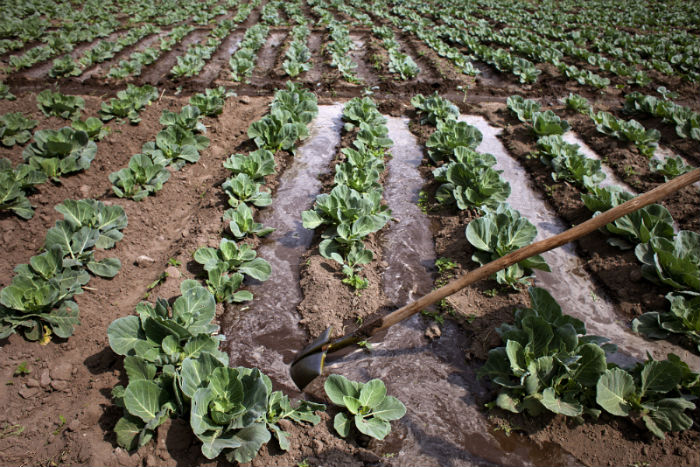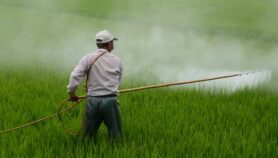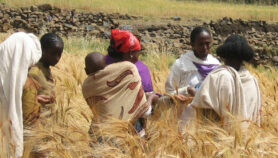By: Steve Wiggins
Send to a friend
The details you provide on this page will not be used to send unsolicited email, and will not be sold to a 3rd party. See privacy policy.
Since 2006, Tanzania has aimed to expand irrigation to one million hectares by 2020, a target reaffirmed by the Minister for Water and Irrigation in autumn last year. [1]
Currently, only five per cent — 461,000 hectares — of Tanzania’s cultivated land is irrigated, out of an estimated 29.4 million hectares available. [1] One explanation for this is that surprisingly little attention has been paid to irrigation in Sub-Saharan African since the revival of interest in agricultural development signalled by the Maputo declaration of 2003. [2]
Public investment in much of Africa has focused instead on improving seeds and encouraging farmers to use more fertilisers. Reasons for this are not hard to find: many irrigation schemes developed in the 1960s and 1970s ran over budget and over time, encountered all manner of technical and social problems, and produced meagre returns.
“Investing in irrigation could help Tanzania feed its growing population, and boost economic growth by increasing agricultural exports.”
Steve Wiggins, Overseas Development Institute
Yet irrigation is a promising way of raising agricultural productivity. It can increase farm yields mightily, allowing two crops to be cultivated each year instead of one, and ensuring more consistent yields. Investing in irrigation could help Tanzania feed its growing population and boost economic growth by increasing agricultural exports not only to other African countries, but also to the tempting Asian markets that lie just across the Indian Ocean.
So how will Tanzania reach one million irrigated hectares by 2020? A workshop convened by Tanzania’s National Irrigation Commission and held in Dar es Salaam last October suggests three areas in particular need attention.
Financing irrigation
The first is drumming up finance for investment. Irrigation requires considerable initial investment. Private finance offers an alternative to governments going into debt, hence the appeal of public-private partnerships (PPPs).
New research suggests that private investment in partnership with the public sector can work. During the workshop, researchers highlighted three examples of successful Tanzanian irrigation schemes engaged in formal public-private partnerships. [3] Two of them are “outgrower” schemes, whereby smallholder farmers supply processing plants on a central estate, and the other example involves a cooperative of smallholders.
But success is not necessarily easily achieved. For formal PPPs, the studies show that success depends on combined efforts of many different individuals and institutions such as the ministries of water and agriculture, water boards, large-scale agricultural firms, farmers and their organisations, commercial banks, donors and non-governmental organisations.
Because these schemes depend not only on getting the engineering, farming, economics and marketing to work, but also on effective coordination across the different stakeholders, they often run into glitches of one kind or another. Those with crucial stakes in scheme success — most notably farmers — have to be prepared to alter their plans and find workable solutions.
Supporting farmer-led irrigation
What should the government do to support farmer-led irrigation? Driven by market opportunities such as the attractive prices for onions and tomatoes in domestic markets, farmers have been able to develop their schemes despite limited access to formal finance and collective tenure of land. [4] Although many are on quite a small scale, some schemes cover areas of more than 1,000 hectares.
“Government officials could set the terms by which river boards allocate water, and empower them to enforce these terms.”
Steve Wiggins, Overseas Development Institute
Should public support be offered to such schemes? If so, what would be the most effective use of scarce funds and capacity? To ignore informal schemes would be to forego the chance to enhance their functioning and in some cases to expand them. On the other hand, lavishing attention and funds on a few favoured farmer initiatives could lead to farmers expecting government to help them out every time they encounter a problem.
Fair allocation of water
While in some parts of Tanzania water is relatively abundant, in other parts water is limited. Conflicts can arise between different sets of irrigators, and between farmers and urban water users. [5] Two cases illustrate issues with irrigation interventions in Tanzania. First, Dakawa, a public scheme that cannot get enough water from the river to irrigate in the dry season owing to upstream abstraction. [6]. Second, informal irrigators in the Uluguru mountains are competing for water with urban users in Morogoro. [7]
So, how can water be allocated efficiently, fairly and flexibly? Ministers in central government would find it difficult to allocate water fairly and efficiently for each and every specific case because there are too many local factors to consider. But government officials could set the terms by which river boards allocate water, and empower them to enforce these terms. It’s not only about passing acts and regulations: boards need both technical capacity and the political backing to allow them to function.
Forums for resolving disputes are needed as well. In the absence of better water allocation, rights to water tend to be established on the ground by the energetic, the crafty and the powerful. Only by good fortune will such rights be efficient and equitable.If these issues can be addressed, and the challenges outlined overcome, there’s a good chance that Tanzania could make substantial progress towards its target.
Steve Wiggins is a principal research fellow at the Overseas Development Institute, and agriculture lead for the DFID-ESRC Growth Research Programme, which funded the irrigation research mentioned. He can be reached at [email protected]
This piece was produced by SciDev.Net’s Sub-Saharan Africa English desk.
References
[1] Tanzania: irrigation projects get cash boost (Allafrica.com, 2016)
[2] Maputo Declaration on Agriculture and Food Security (African Union, 2003)
[3] Assessing models of public private partnerships for irrigation development in Africa (AMPPPIDA) International Food Policy Research Institute
[4] Phil Woodhouse and others African farmer-led irrigation development: re-framing agricultural policy and investment? (The Journal of Peasant Studies, 9 November 2016).
[5] Anna Mdee and others The politics of small-scale irrigation in Tanzania: making sense of failed expectations (Mzumbe University, Future Agricultures and University of Sussex, September 2014)
[6] Anna Mdee Dakawa Rice Farm- small-scale irrigated cooperative rice production (University of Sussex, January 2014)
[7] Anna Mdee Case study: irrigation in the Uluguru Mountains- Morogoro (Mlimani AreaChoma) (University of Sussex, January 2014)














